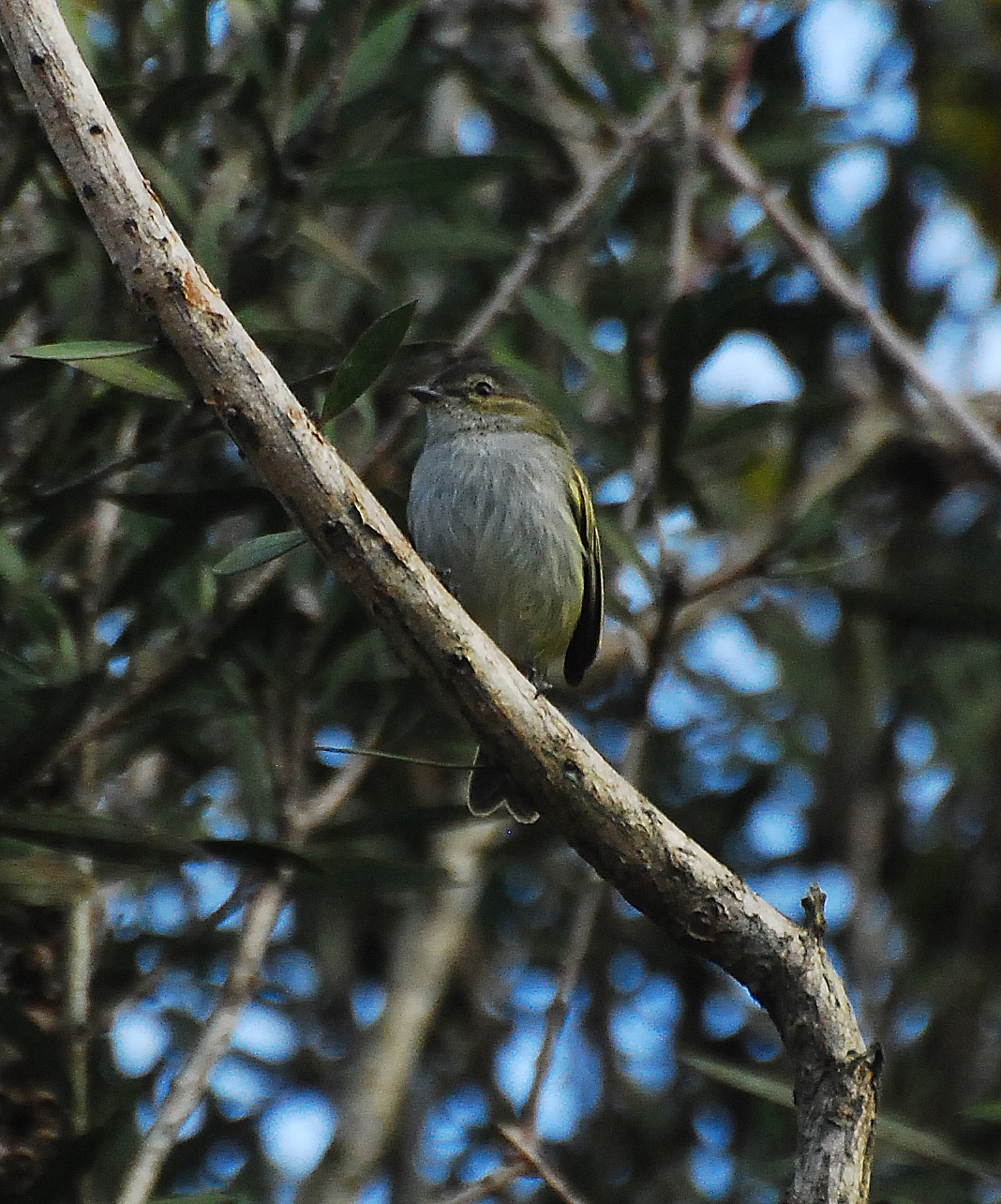- Mistletoe Tyrannulet
Taxobox
name = Mistletoe Tyrannulet

status = LC | status_system = IUCN3.1
regnum =Animal ia
phylum = Chordata
classis =Aves
ordo =Passeriformes
familia = Tyrannidae
genus = "Zimmerius "
species = "Z. vilissimus"
binomial = "Zimmerius vilissimus"
binomial_authority = (Sclater & Salvin, 1859)The Mistletoe Tyrannulet ("Zimmerius vilissimus"), more commonly known as the Paltry Tyrannulet, is a very small
passerine bird in thetyrant flycatcher family. It breeds from southernMexico toPanama . TheVenezuelan Tyrannulet , "Z. improbus" of northernColombia and northernVenezuela was previously considered to be a subspecies of this bird.The Mistletoe Tyrannulet is a common bird from the lowlands to 3000 m altitude, mainly in humid regions. It can be found in forests, second growth, pasture and plantations with trees, and shady gardens.
The nest is roughly spherical with a side entrance and made of mosses and lined with plant fibre; it may be built amongst mosses or dangling
epiphyte roots, inside a large dead leaf, or inside or below a Yellow-olive Flycatcher’s pendant nest. It is constructed 2-15 m above the ground. The typical clutch is two rufous-marked dull white eggs. Incubation by the female is 14-15 days to hatching, with another 17 days to fledging.The Mistletoe Tyrannulet is 9.5 cm long and weighs 8.5 g. The upperparts are olive-green other than a dull grey crown to the head and grey supercilia. The wings are blackish with yellow feather edging but no wing bars, and the longish tail is dusky. The throat and breast are off-white with grey streaking, the belly is white, and the flanks have a dull yellow-green cast. The long legs are blackish. The sexes are similar, but young birds have an olive crown, yellow-tinged supercilia and broader but paler wing bars. The call is a loud "peeer" and the dawn song is a plaintive "yer-de-dee, yer-de-dee".
The Mistletoe Tyrannulet is an active bird, usually seen alone or in pairs high in trees. It eats mainly
mistletoe , but also other berries and smallinsect s, all taken in flight in short sallies from a perch.References
* Hilty, " Birds of Venezuela", ISBN 0-7136-6418-5
* Stiles and Skutch, "A guide to the birds of Costa Rica" ISBN 0-8014-9600-4External links
* [http://www.proeval-raxmu.org/monitoreo/zimvil.jpgPhoto] ; [http://images.google.com/imgres?imgurl=http://www.proeval-raxmu.org/monitoreo/zimvil.jpg&imgrefurl=http://www.proeval-raxmu.org/monitoreo/caquipec.htm&h=248&w=227&sz=10&hl=en&start=5&tbnid=YUkrunEEhfC9BM:&tbnh=111&tbnw=102&prev=/images%3Fq%3D%2522zimmerius%2Bvilissimus%2522%26gbv%3D2%26svnum%3D10%26hl%3Den%26sa%3DG Article] Guatemalan Study area
* [http://www.zeledonia.org/galeria/fotos/Zimmerius_vilissimus.jpgPhoto] ; [http://www.zeledonia.org/galeria/formicariidae.html Article] AOCR-(Costa Rica)
* [http://vireo.acnatsci.org/search.html?Form=Search&SEARCHBY=Scientific&KEYWORDS=zimmerius+vilissimus&showwhat=images&AGE=All&SEX=All&ACT=All&Search=Search&VIEW=All&ORIENTATION=All&RESULTS=24 "Paltry Tyrannulet" photo gallery] VIREO
Wikimedia Foundation. 2010.
